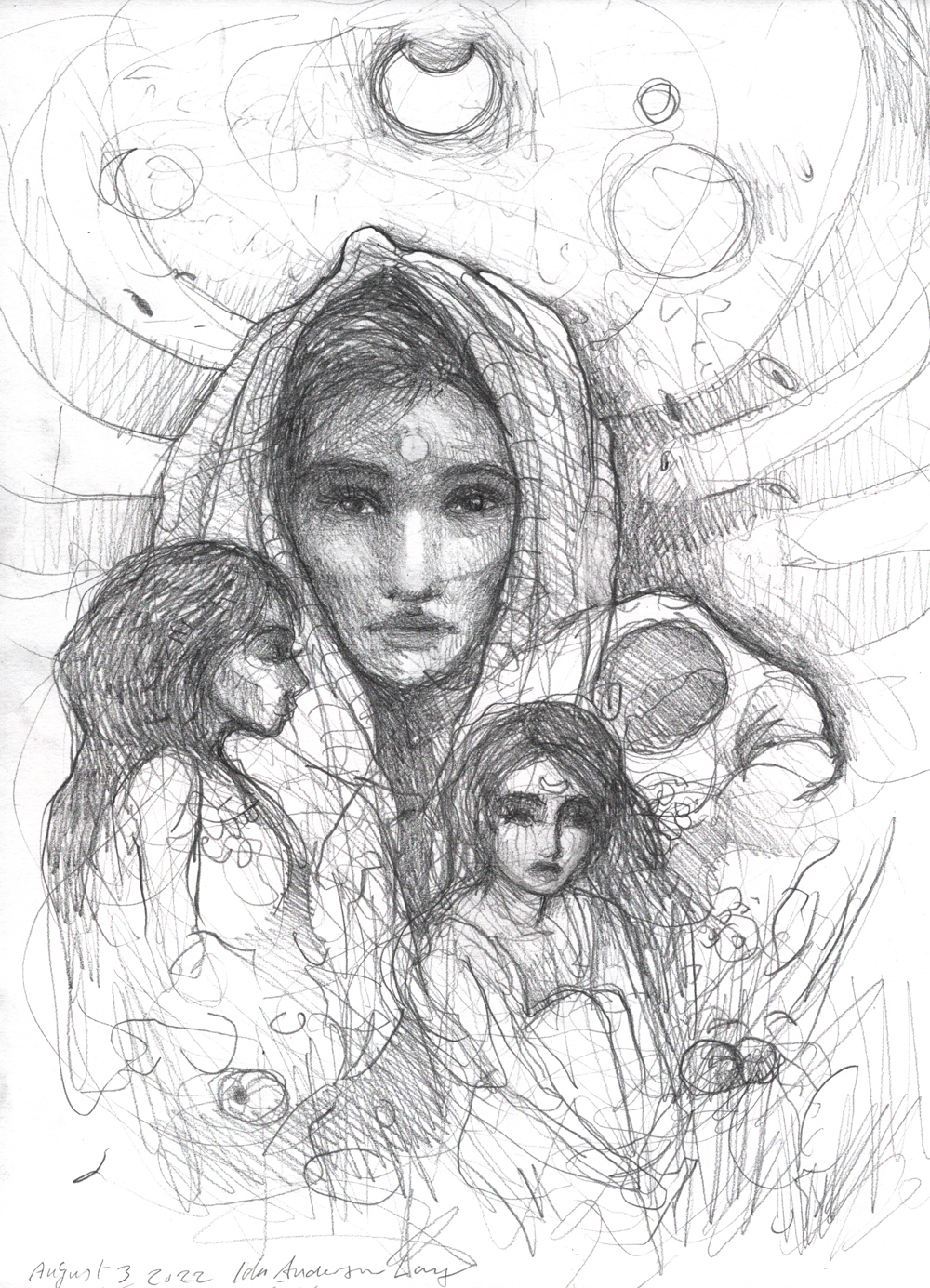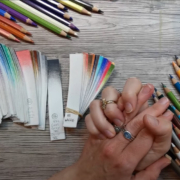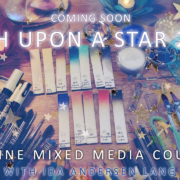3 things to draw … to get really good at drawing and enjoying it too
To grow really good and solid drawing skills, you need to consistently practice them. Employing different approaches, a variety of motifs and put your self in different drawing situations.
It´s something I´ve experimented with for many years, to find and develop my artistic voice. And at the same time honing my drawing skills and staying in drawing-shape (yes, there is such a thing 😀 as being drawing shape. I´ve also tried to loose it and luckily finding it again. More about that in another post) .
Preparing my annual sketching retreat, Sketching for Life gives me the chance to circle back and reflect on the different types of drawing, I feel it´s important to continuously work on, to find a beautiful sweet spot, that is your unique creative voice in drawing and art expression.
The tree main types of drawing situations
There are myriads of ways of approaching drawing. I could write a book, just about this one topic.
But here are three important situations or modes of drawing, I find that one needs to consider in the kind of creative environment we live in today, dominated by the computer and digital universe.
- Drawing from photo references – be them printed out or on computer, phone, tablet etc.
- Drawing from life – meaning drawing directly from 3 dimensional objects and views in our real physical world, with naked eyes.
- Drawing from memory and imagination.
I list these modes in what I would say is the easiest on top, being from photos, and the most complicated and challenging at the bottom, being drawing from memory and imagination, without any references to look at, whilst you are actually drawing.

This 1 hour sketch was made partly from photo references and partly from imagination.
* * *
That´s some biggies here.
Practicing all these three areas of drawing is crucial, to forge your own way into drawing, discovering your sweet spot and personal voice.
Here are some reflections of mine, based on personal experiences.
Drawing from photographic references …
is the “easiest” (but not necessarily easy, though) – beacuse they are already 2D, and not 3D, like in the physical world. This alone takes away some of the challenges of drawing, and it is easier to directly translate what you see on a photo, on to your paper, than “real life” subjects. One of the amazing opportunities of drawing from photos is you can find references of and draw virtually anything. The possibilities are almost endless, and can really deepen our stock of visual memory and imagination. By the way, my favourite resource for royaltyfree reference photos is the site unsplash.
Drawing from real life …
is much more challenging, for a number of reasons. Everything is much more out of control. First of all, what you see is in 3D and the challenge of translating it to the 2D language of drawing is radical. On top of that, there is the challenge of size and scaling what you see down to the limited space on the paper. And on top of that, there is the elusive challenge of your binocular sight. Drawing from life can be a profound joy, once you tap into it, and I would dare say, have the potential of completely changing your world view, in the best possible way. That´s what I experience, personally.
Drawing from memory and imagination …
Many of us, me included, have dreams visions and ideas inside of us, that we have a deep desire to express on paper. This is another subject that deserves a book on its own, but here is some food for thought, that can be very helpful. To draw from memory and imagination, first you need to thoroughly work with drawing from references and life (the two first). Because your visual memory and imagination largely originates in your real life visual experiences. So if you really commit, to drawing from references and life, that will inevitably pave your way to successfully draw from memory and imagination.
I systematically work with these three main types of drawing, to keep in as good drawing shape as possible.
In the sketching retreat I am currently preparing, I will teach you exactly how I do that, so you can build a habit of these three kinds of drawing and sketching that is manageable, joyful and that hones your skills.
* * *
Here´s to your drawing bliss!
Love, Light and Drawing Shimmer,
Ida











I have been drawing daily , with a friend, using a different topic every day. Some are ‘life’, I have used photographs and a couple of times filled the background of these with imagination. The latter is harder for me as the finished article doesn’t always appear as I initially saw it in my mind! If I put them in order of preference it would be 1) life, 2) photo and 3 imagination.
The most difficult thing for me is drawing a live model; they rarely keep their mouth still! They seem to be more concerned with their body so keep it fairly still, but they forget about their mouth. Therefore, I find it easier to draw from a photo or Pinterest entry. I’ll try Splash. That’s new to me.
I mainly draw from reference photos- if I want to draw something I have seen in real life I generally take a photo as it helps me with the perspective – I do occasionally draw from my imagination and I like how whimsical the drawings turn out to be
I have drawn from photographs and from real life (mainly street scenes, garden scenes, and not people-life-drawing classes).
I’m not sure if I can draw from imagination. I would like to. Whenever I have tried in the past, I end up drawing the same trees/face/landscape.
I feel like my imagination was stifled when I was a child. I grew up in a strict, dogmatic family where imagination (like fairies) was discouraged and ridiculed. Even now – at 51 – I find it sad when I hear my remaining parent ridicule anything which does not fit his belief system. I would never do that to my niece.
I would love to be able to draw things like trees having spirits (and coming to life, as in the Narnia stories), or the stars dancing in the sky.
So, the most challenging for me from the three modes is the imagination mode.
I find any type of drawing brings me joy. It always feels good to see anything I’ve created down on paper.
I have always loved to draw, since I was in grade school. I did not start to take it seriously until I was an adult. My biggest struggle with drawing is number 1) symmetry. As hard as I try my portraits just never come out symmetrical. 2) I use to draw straight from imagination but now I can’t. My imagination just disappeared one day and I don’t know why!! Maybe it was just the stress of adult life and growing up. Regardless, my struggles have caused me to quit Art many many times. Only to then miss it so much and come right back lol Recently I had quit Art and threw all my art and art supplies, worth hundreds of dollars in the trash. So now I’m back starting from scratch. I’m trying to find inspiration but there are so many successful artists out there I just feel I can’t do it. But really Art is not about ability. It’s about expression, freedom, innocence, magic, and love. I don’t want to quit ever again. Even if I never make good art enough to sell.
I’ve personally found that learning so called “constructive anatomy” helped me learn how to draw people from imagination far more than practicing by copying from reference. (It’s basically simplified anatomy, building the human form using geometric solids and memorized proportions.) I’m still far from having the skills I’d like to have since I don’t practice often enough… but they’re getting better.
Copying photos taught me how to very accurately copy photos, basically. As I’m drawing, I’m compelled to stay as close to the (live or photo) reference as possible, and I don’t know how to add my own style to the drawing. It’s like my brain is switched to “copy mode” and forgets everything else. So there’s a huge gap between my drawing style when I rely on imagination, and my style of drawing from reference. I’d really like to learn how to bridge that gap. That’s what I’m focused on right now in my sketchbook practice.